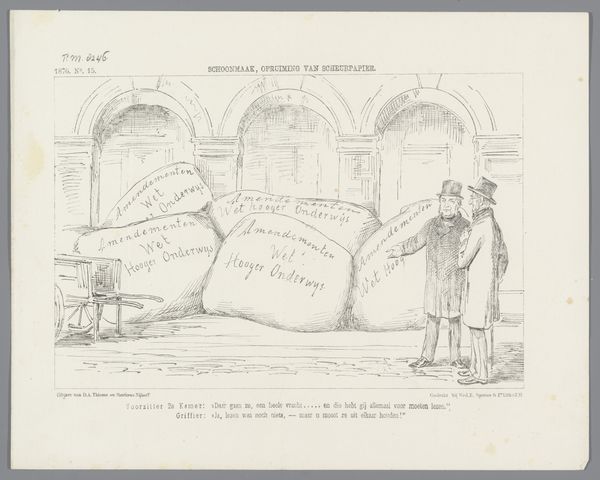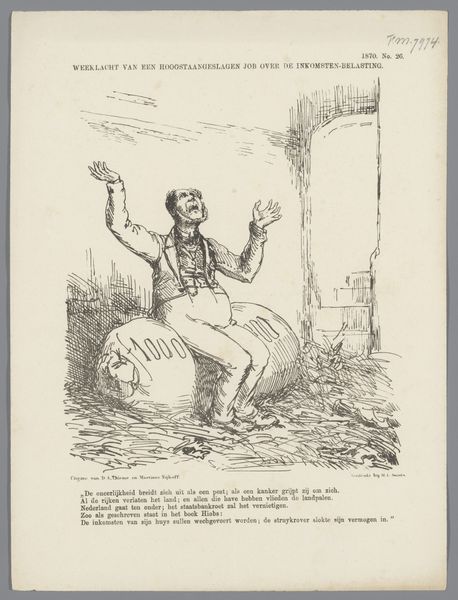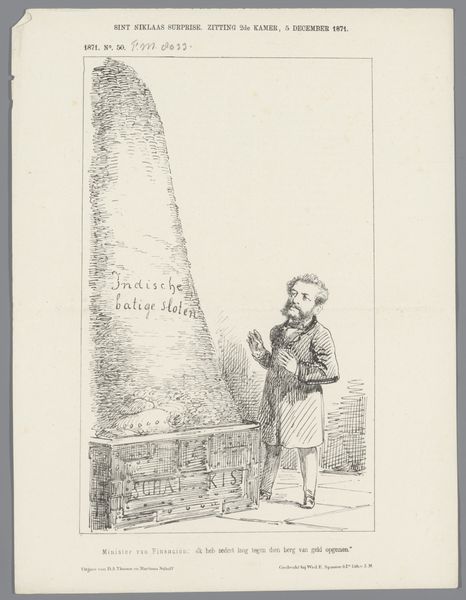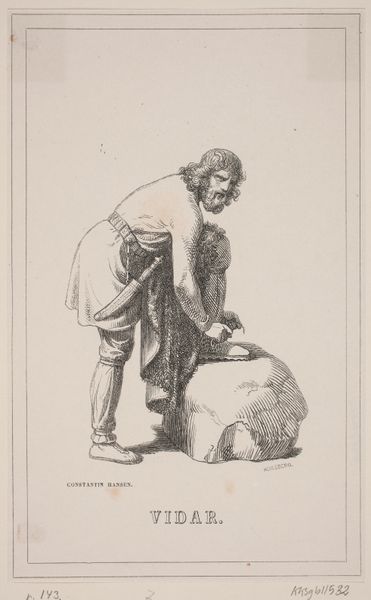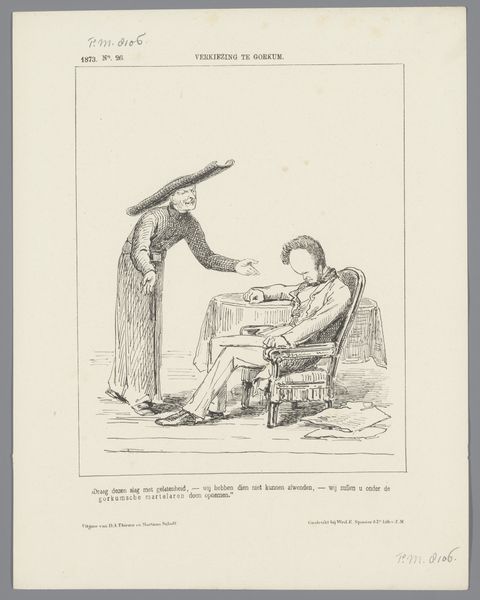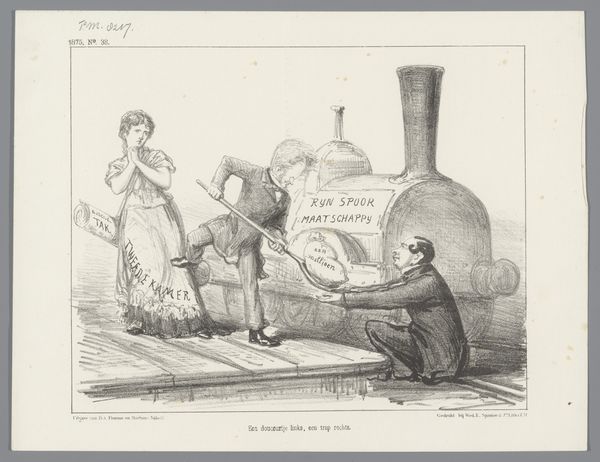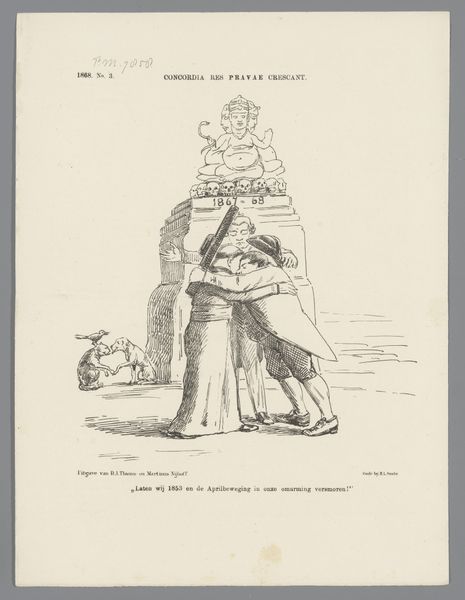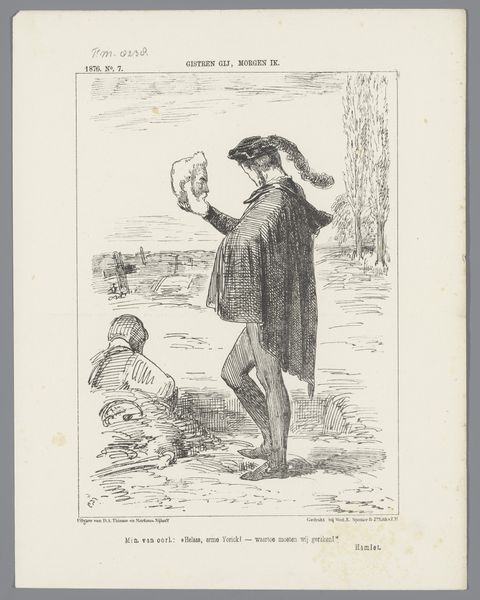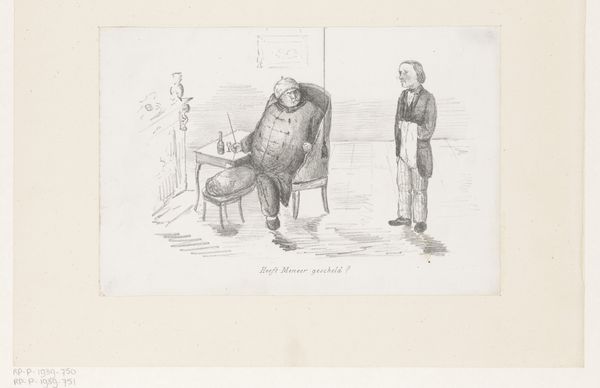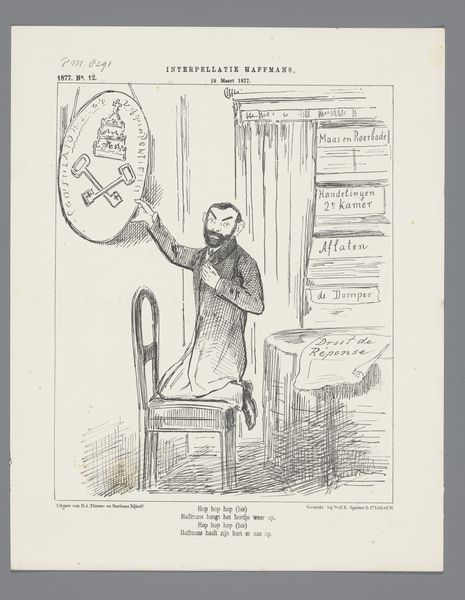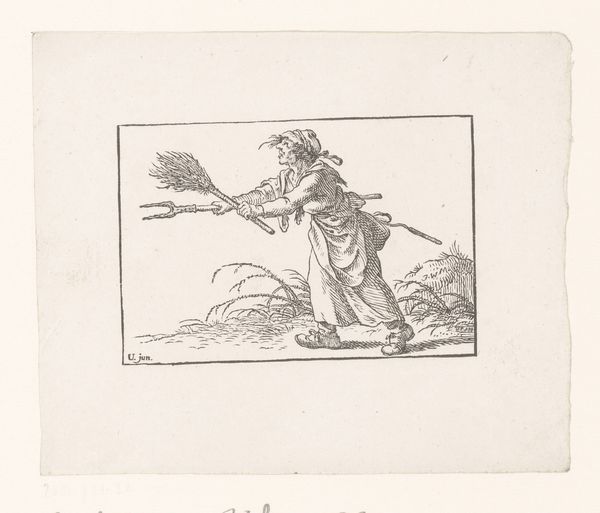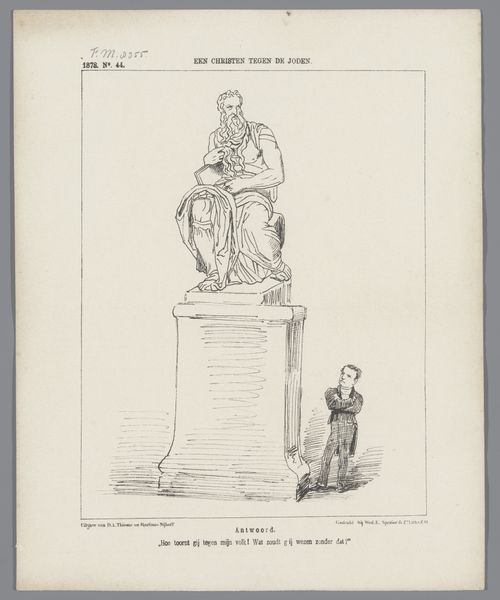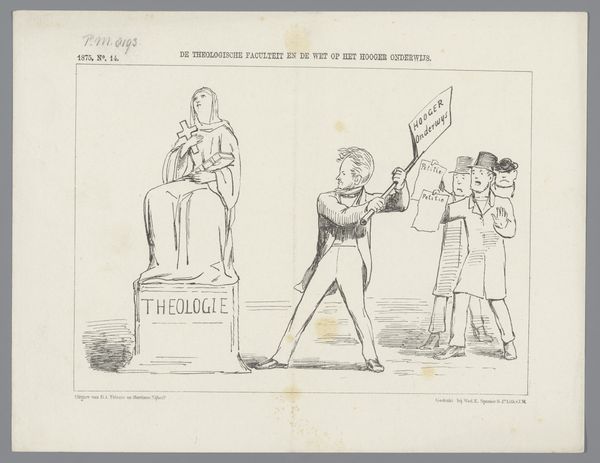
Spotprent op de Roomse kerk, naar aanleiding van de Aprilbeweging, 1853 1853
0:00
0:00
drawing, print
#
drawing
# print
#
caricature
Dimensions: height 313 mm, width 491 mm
Copyright: Rijks Museum: Open Domain
Curator: So, this drawing is titled "Spotprent op de Roomse kerk, naar aanleiding van de Aprilbeweging, 1853", dating back to 1853, of course. It is held at the Rijksmuseum. The artist, though, remains anonymous. Editor: Hmm, a man poking at two large, engraved stones with a stick—feels a bit like someone confronting stubborn, outdated ideas. There's something quite assertive about the act, but also weary. I can't quite say if he has hope for moving them. Curator: Well, that interpretation isn’t far off. Given the "Aprilbeweging," the drawing serves as a caricature commenting on the Catholic Church, in this case, specifically related to theological education. You can make out some of the names, like ‘Faculteit der Godsdienstwetenschappen’ or, Theology faculty, carved into those stones. Editor: So the rocks are…institutions, or rather, dogma rendered immobile? What fascinates me are the materials. It's a print, presumably mass-produced, putting this critique into wide circulation, into homes, newspapers, public spaces—almost as a commodity itself. Did the people producing those images see the irony of criticizing an establishment with the very tool that was creating mass-communication networks? Curator: The material conditions of its production speak volumes. Its accessibility would amplify its message and reflect popular sentiment toward religious conservatism. Editor: Exactly, it takes something complex—social unease, religious tension, institutional critique—and packages it for mass consumption. The lithographic lines, so clean and repetitive, even echo the inflexible thinking it seems to protest. Curator: You’ve really hit upon the nuance! It captures a society at odds, using emerging media to challenge entrenched powers and social practices. One man, it appears, hopes to topple an empire of thought. Editor: In the end, it is all the more fitting, since this object itself is now an archive of a brief window in time, one that tells of ideological struggles, social movements, artistic ingenuity. An artist and a country both finding a new path. Curator: And hopefully this conversation encourages everyone to dig a little deeper.
Comments
No comments
Be the first to comment and join the conversation on the ultimate creative platform.
